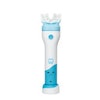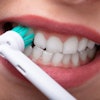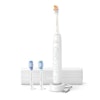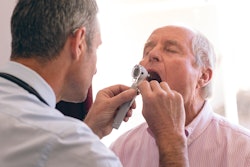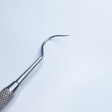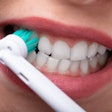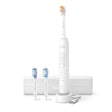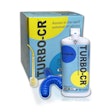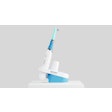Researchers have developed a new floss pick with smart technology that can detect cortisol, a hormone released during stressful periods, according to a story recently published in Tufts Now.
The pick, which looks like a typical flosser, possibly paves the way for better managing chronic conditions like diabetes, heart disease, and cancer, according to researchers from Tufts University in Massachusetts.
The idea for the retrofitted pick was inspired by other research the university was conducting.
“We didn’t want measurement to create an additional source of stress, so we thought, ‘Can we make a sensing device that becomes part of your day-to-day routine?’” Sameer Sonkusale, a professor of electrical and computer engineering at Tufts University, said in the story. “Cortisol is a stress marker found in saliva, so flossing seemed like a natural fit to take a daily sample.”
The floss pick’s technology builds on a nearly 30-year-old advancement called electropolymerized molecularly imprinted polymers that form an imprint around a template molecule, in this case, cortisol. Saliva captured by the flosser is channeled through the floss to the handle and an attached tab, where electrodes detect cortisol.
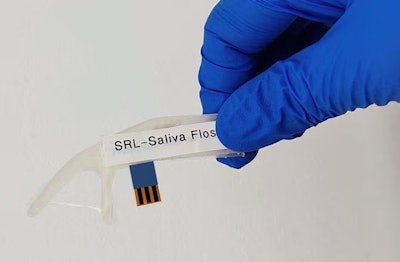 This dental floss pick has a sensor that can assess your stress level. Image courtesy of Atul Sharma and Nafize Ishtiaque Hossain.
This dental floss pick has a sensor that can assess your stress level. Image courtesy of Atul Sharma and Nafize Ishtiaque Hossain.
Sonkusale and his colleagues, though, say these polymers can track other biomarkers like estrogen, glucose, and others for cancer detection, which opens other possibilities for tracking and managing other health conditions potentially. Sonkusale and others have created a startup and are working to launch the super-sleuthing dental pick.
With cortisol, chronic stress spikes blood pressure and causes other adverse effects like decreased immune function and anxiety. Sonksusale hopes the floss pick system can be a valuable tool for doctors and patients to provide an accurate picture of a person’s stress levels and their overall health.
“For diagnostics, blood is still the gold standard, but once you are diagnosed and put on medication, if you need to track, say, a cardiovascular condition over time to see if your heart health is improving, then monitoring with the sensor can be easy and allows for timely interventions when needed,” Sonksusale said.
